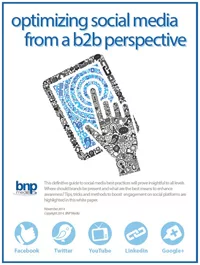ELECTRONICS/ELECTRICAL ENDUSER: Hot Designs Need a Stronger Bond


Background
The success of today's consumer electronics stands and falls with their design and functionality. Hand-held devices increasingly include more features, such as hard drives, radios, and digital cameras, with fancier designs incorporating mirrors, aluminum bezels, or steel nameplates on the plastic housings. Yet, even with the trend toward smaller devices, today's handhelds need to retain a certain degree of ruggedness.Problem
While we as users appreciate the versatility and the developments of the consumer electronics market, this same versatility and expectation with respect to speed presents challenges for the manufacturers of the devices themselves. Fastening, for example, is traditionally accomplished using mechanical means such rivets, welding, screws, clips, etc., as well as liquid, hot-melt, and pressure-sensitive adhesives. Adhesives and mechanical fasteners, however, often do not offer the characteristics needed to solve today's fastening challenges, such as simplicity of application, reduced preparation time, and fewer process steps. Smaller package sizes require high bonding strength where space restrictions and thickness are an issue.The Solution
Heat-activated film (HAF) answers these and other challenges, offering high bonding strength, the ability to bond different materials together (such as metal to plastic), and high temperature stability. HAF offers numerous benefits and advantages over other fastening methods. It:- eliminates drying time and solvent issues normally related to liquid glues, epoxies, cyanoacrylates, etc.
- replaces screws, bolts and pressure-sensitive double-sided tapes often used for joining and assembly
- eliminates the drilling, punching, crimping, or clipping typically required for mechanical fastening
- offers precise dimensioning; no metering errors as typically found with liquids
- offers flexural strength and high bond integrity when bonding metal to plastic
- replaces traditional welding, soldering and riveting as fastening techniques
- renders completely clean processing; no residue or disposal problems
- reduces flow or oozing compared to other thermoplastic systems
- is easily die-cut into customized shapes and configurations
- offers excellent cold shock performance despite thin caliper
- offers excellent heat resistance after full cure
- is available in varying thicknesses
Using HAF, however, presents another set of challenges: it is a rather elastic material, has no tack when cold, and needs temperatures of up to 220°C for a certain time to bond. This requires a placement mechanism that can handle fragile, non-tacky materials while offering the ability to program time, temperature, and pressure to control the bonding process.
Fully or Semi-Automated Placement
There are two ways to meet the unique combination of requirements for this application: a fully automatic and a semi-automatic solution. The fully automatic solution incorporates its fully automatic assembly platform APAC. The APAC is an innovative, fast pick-and-place cell that blends a high-performance robot with adhesive component feeders for up to four components. The programmable system can be loaded/unloaded with drawers and requires only minimal human involvement. Multiple process stations - which heat up the target part before the HAF is placed - allow programmable dwell time for the adhesive to react. Short cycle times are met by multiple process stations working simultaneously. The target part is then automatically returned to its tray to cool down. This is a very safe procedure for the operator, as he/she is not forced to handle hot target parts.Equipped with an optional vision system, the APAC fulfills the required placement accuracy for the HAF assembly of up to +/- 0.013 mm. The semi-automatic solution relies on the model 3065 with bench-top configuration. The application shown is an HAF assembly into a multimedia card (MMC) lid. In addition to the well-established standard platform, this model uses a customized nest with a heating device and a linear feeder that enables manually fed automatic operation. The linear feeder, with integrated heater, feeds and pre-heats target parts before they enter the heated nest. Once in the nest, the lid is automatically centered and the HAF is placed. The temperature of nest and pre-heater, the placement force, and the placement dwell time are all adjustable parameters, allowing complete process control. Using the bench-top platform for stand-alone operation allows for a simple-yet-automated operation. Operator responsibilities are limited to manually loading the lids and replacing rolls of heat-activated film.
AccuPlace is a recognized leader in standardized solutions for assembly of film adhesive components. These solutions are employed by market leaders in the computer and peripheral, mobile communication, life sciences, and automotive market segments. For more information, contact Guni Schiller, AccuPlace, 1800 NW 69th Ave. Plantation, FL 33313; e-mail gunhild.schiller@accuplace.com ; or visit http://www.accuplace.com .
tesa tape inc. manufactures and markets pressure-sensitive adhesive tape solutions for industrial and consumer markets around the world. With corporate headquarters in Hamburg, Germany, the company operates 11 manufacturing and converting facilities globally and distributes its products in over 50 countries around the world. For more information, contact Nicklas Friden, tesa tape inc., 5825 Carnegie Blvd., Charlotte, NC 28209; e-mail nfriden@tesatape.com ; or visit http://www.tesatape.com .
Links
Looking for a reprint of this article?
From high-res PDFs to custom plaques, order your copy today!



